The private food corp you've never heard of
A recipe for Briam, a roasted Greek vegetable stew
At a conference in Shanghai some years ago, I sat at the gala dinner opposite an unassuming-looking man who talked with great affection about his pleasure in his cow-and-calf ranch in Montana. Or rather ranches. Because he owned three, in Park, Sweet Grass, and Fergus counties. Relishing his anecdotes about riding out across the plains at early sunrise and the feel of the fur of a new-born calf (you get the panoramic sweep - just add fiddles), I was captivated by the down-home spirit of this apparently ‘regular guy’, albeit one with three ranches.
That should have provided a clue. A ranch cannot be compared to a European farm. Just one of his, the PN Ranch, was more than 40,000 acres in size, roughly 62 square miles big. Back in 2014, it was listed for sale for $21.5 million.
Far from down-home, Whitney MacMillan was CEO of Cargill for 19 years, increasing the company’s annual turnover from $10 billion to $33 billion in just over ten of them. By the 1980s, the family-owned grain company had become the world’s largest. Today, it’s the largest private company in the United States, worth over $70 billion. Each of the 14 Cargill-MacMillan family members is worth more than a billion dollars, although they do lag behind the Waltons who own Walmart, at $432 billion the world’s richest family, beating out the UAE and Qatari oil families. In 2023, Cargill generated $177 billion in revenue, more than Nike, McDonald’s and Coca-Cola put together.
The business began in 1865 when William Wallace Cargill bought a grain warehouse in Iowa. Soon he expanded into railroads, shipping and commodities, a real life Atlas Shrugged magnate. In 1909, his daughter married into the MacMillan family who lived across the road, her husband John MacMillan Snr taking over the company on the death of his father-in-law and creating a family dynasty which has never gone public.
Staying in private family hands means Cargill need make no public disclosures on its finances and nor have shareholder votes. Now Cargill controls over 25 percent of the world’s grain trade, supplying ingredients to Coca Cola, Nestlé (the world’s largest food company by revenue), General Mills, and more. Every year, it ships 225 million tons of industrial, agricultural, and food-related commodities like meat, vegetables, salt, grains, animal feed, and fertiliser, along with metals, cotton, iron ore and coal, through ports and along shipping routes it owns. It employs around 160,000 people in more than 70 countries. Human Rights Watch and the Rainforest Action Network have associated Cargill operations with negative human rights, child labour in cocoa farming, deforestation, and land rights issues in the Amazon.
Why you should be concerned is because, if it isn’t clear from the previous paragraphs, Cargill controls what you eat. The behemoth operates more of the global food chain than any other company, running silos, ports and shipping routes, and owning infrastructure other businesses rely on. You think your local supermarket chain manages the supply chain ‘from farm to plate’, as the popular saying goes? More likely Cargill does.
We’re beginning to register concern about the excessive quantities of our diminishing supply of water already required to cool the huge data centres containing the servers, routers, and networking equipment that keep the internet functioning, even before we consider the exorbitant cooling water demands that AI storage facilities will generate.
So why aren’t we querying how safe is much of our global food supply in the hands of just one very private company we know little about? How pricey could even cheap processed food become?
Not all of our food is part of a fragile chain, however. Nothing on this Greek taverna menu, at any rate.
Nor any ingredient in Briam, a super-simple Roasted Vegetable Stew from a paradise island in the Cyclades.
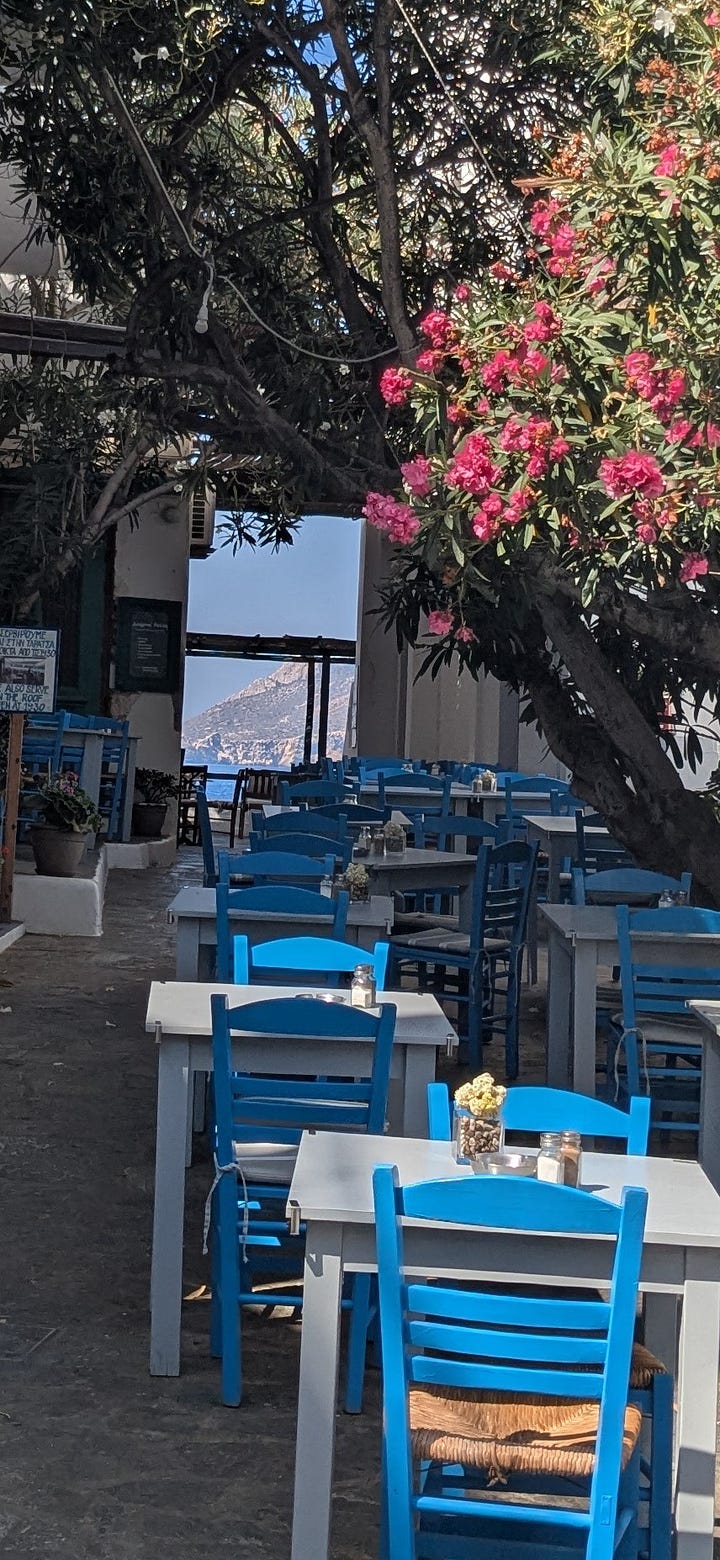
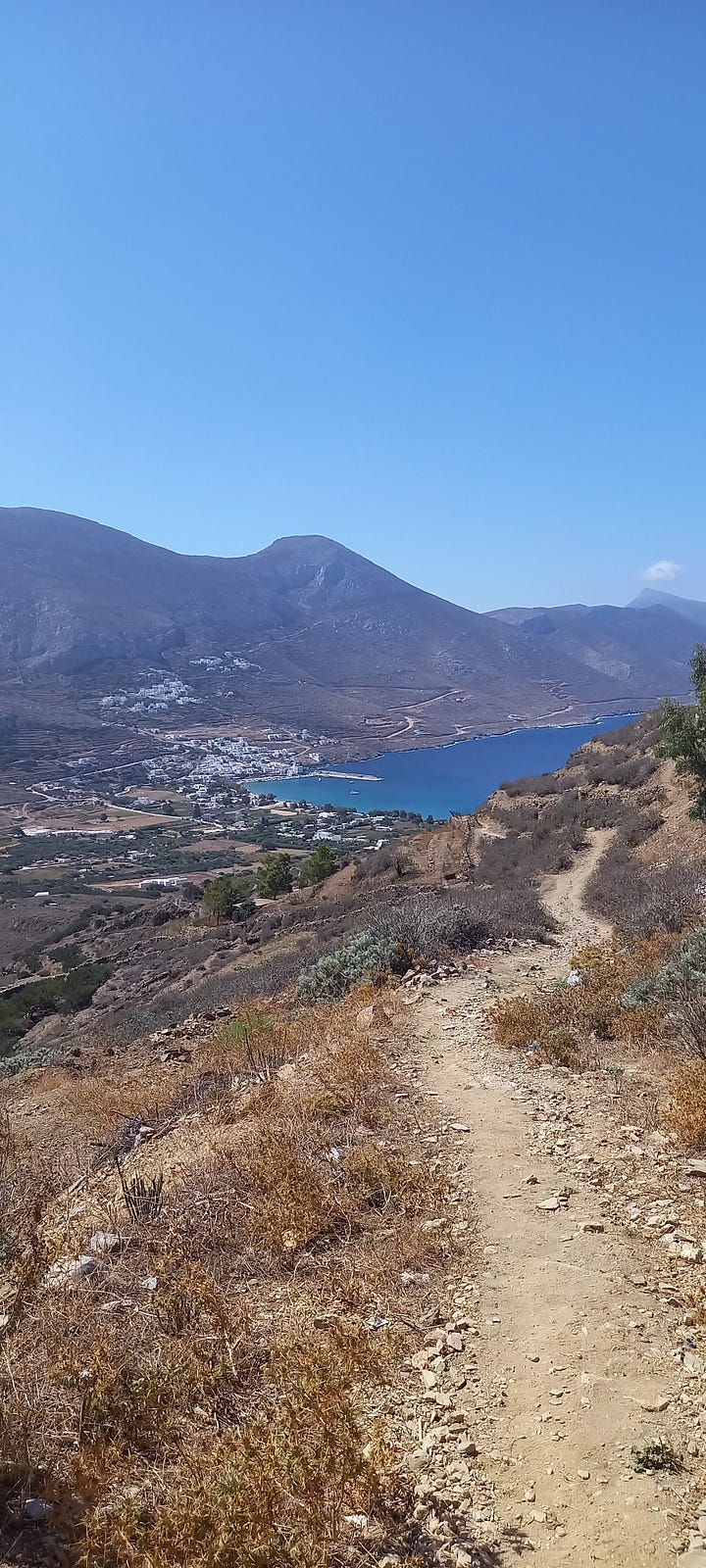
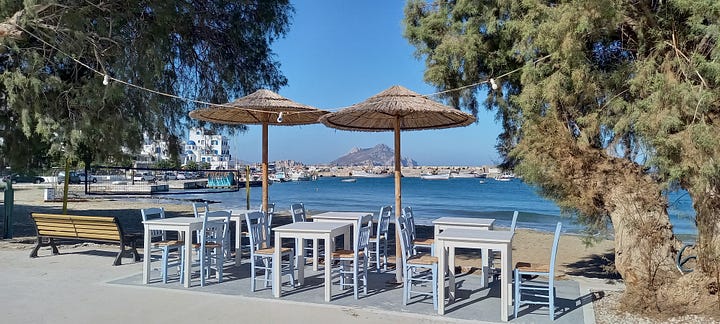
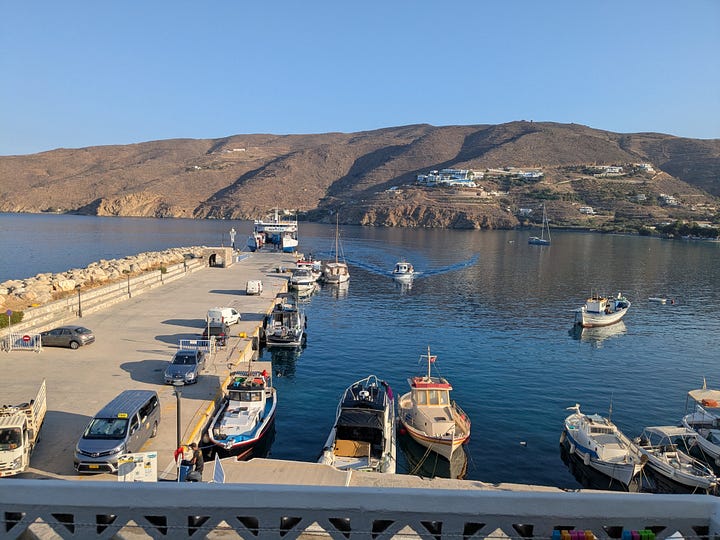
It makes great use of the last of our summer vegetables but will adapt to any vegetables year-round to make a soothing main or side dish.
Use all or any of these you like to eat:
3 courgettes/zucchini, thickly sliced
3 aubergines/eggplants, thickly sliced
2 potatoes, peeled (or not if you prefer) and sliced more thinly
2 carrots, ditto
500g/8 oz green beans
1 large onion, peeled and thinly sliced from stem to root (red adds nice colour but yellow are just as good)
2-3 cloves, peeled and thinly sliced
2 teaspoons dried oregano - wild mountain, if you can get it (optional)
Leaves from a small bunch of parsley, roughly chopped
1 teaspoon salt
½ teaspoon pepper
½ cup olive oil
2 tablespoon tomato paste dissolved in
1 cup of water
1 can chopped tomatoes
A small block of feta (optional)
Preheat oven to 180C/350F.
Put the first eleven ingredients into a large mixing bowl and with your hands, toss them together well to make sure everything is coated in oil.
Spread all the ingredients in one layer in an oven tray. Pour over the chopped tomatoes and the tomato paste dissolved in the water.
Bake in the oven for 30 minutes. Remove and gently stir, adding a little water if it seems to be drying out, then return to the oven for a further 30 minutes.
Allow to cool and mellow for 5-10 minutes before serving. If you wish, you can scatter over informal lumps of feta over the top. Serve with warm crusty bread to mop up the juices.


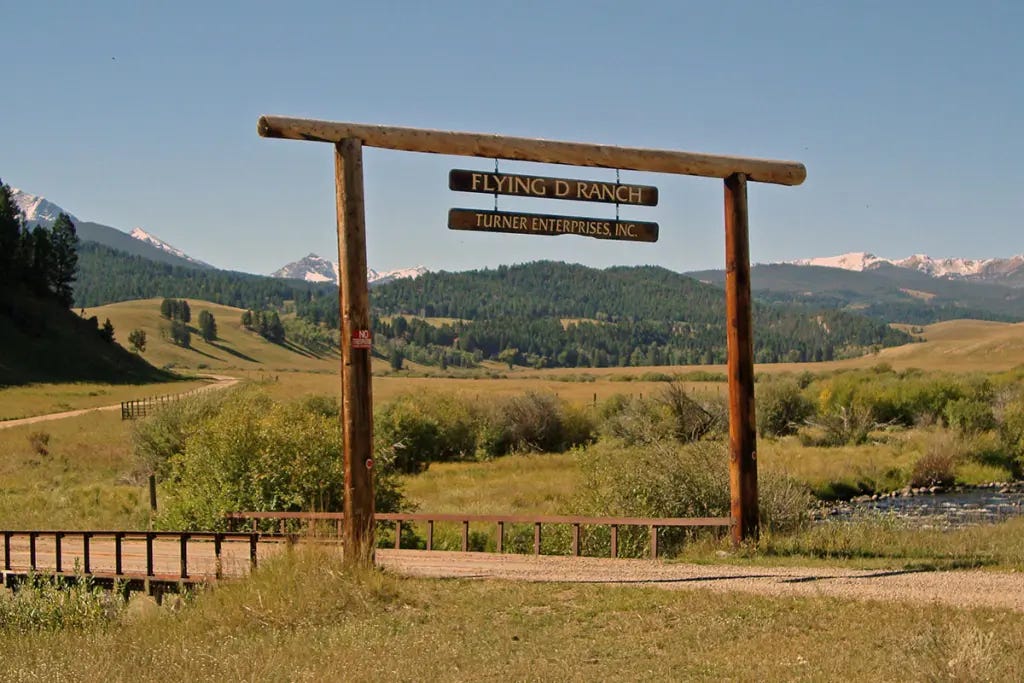

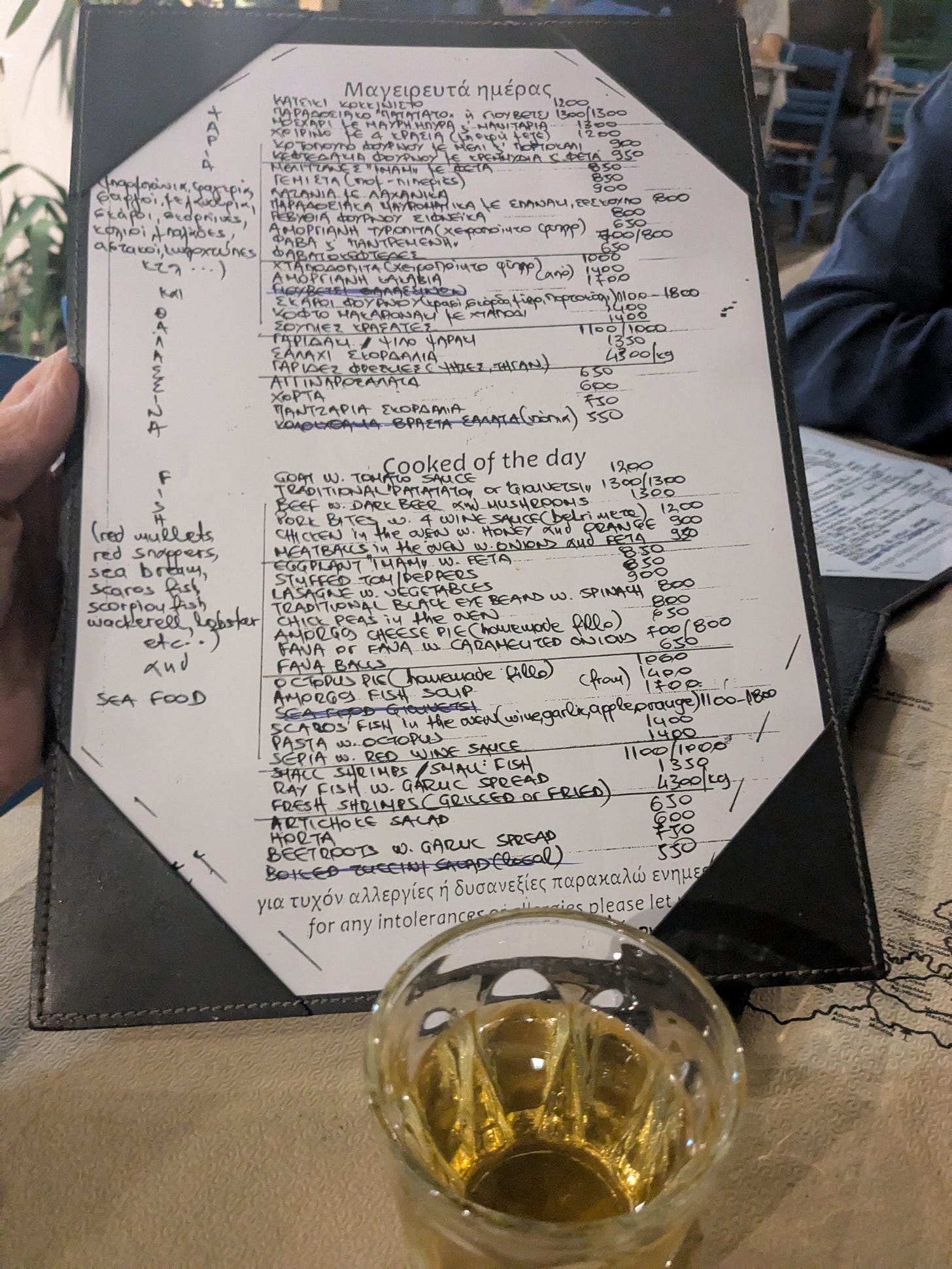
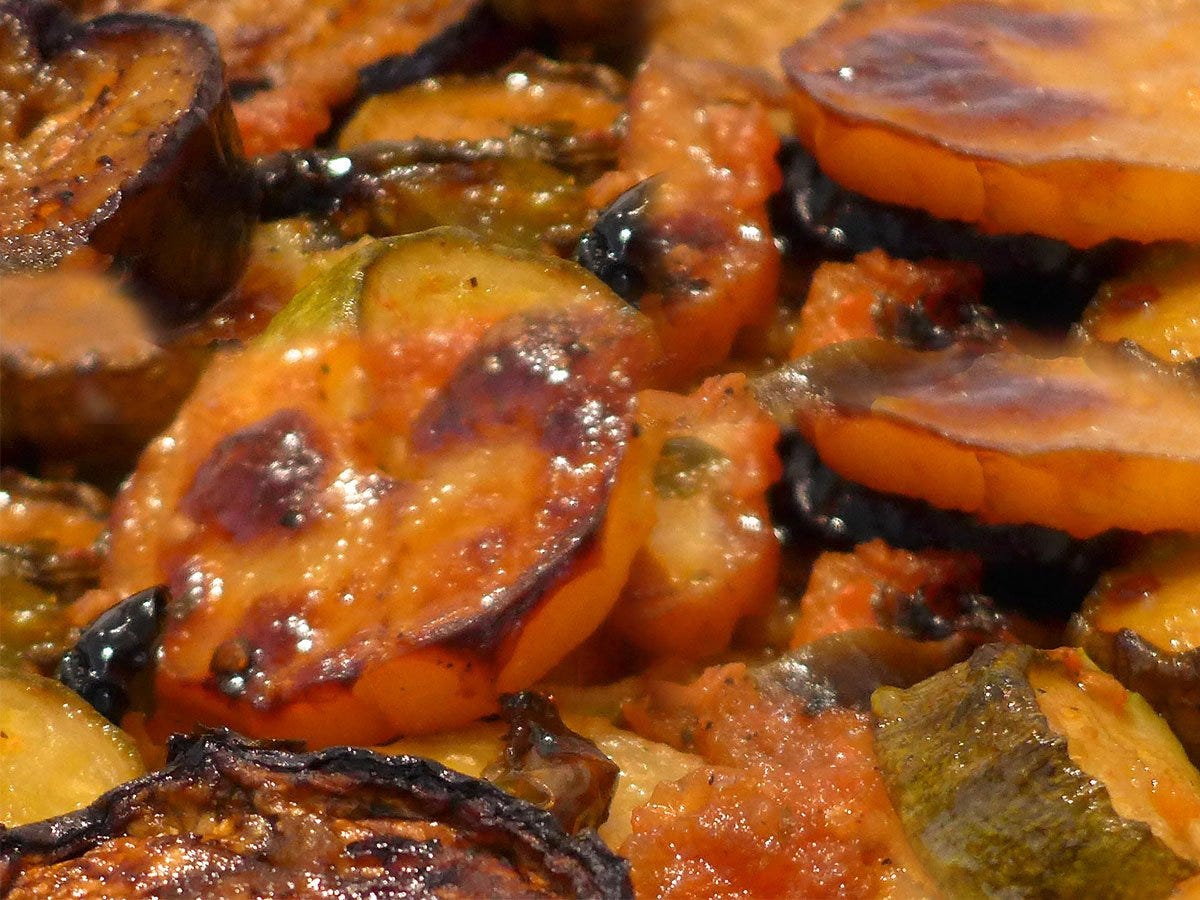
My green grocer will be glad to see me when I make this gem.
You bring me back again, now I remember learning about Cargill in University. My favorite class before toddling of the France was the Geography of Food. A course profoundly changed my outlook on the world. After France (re-entry to America was another shocker) I took a another class with that same Professor this time on Agribusiness, learned about trading grain futures and became disillusioned with the whole business of food. Although Jane Brody the NYTimes food writer visited that semester and her bright encouraging words helped offset the horror of the industrial food complex as you often do now.
Excellent! Thank you for this great recipe!